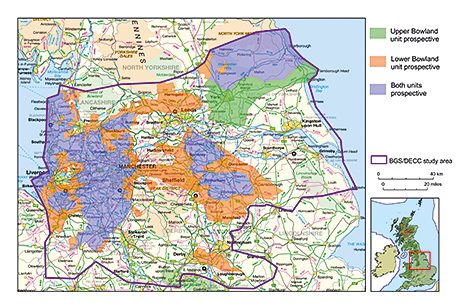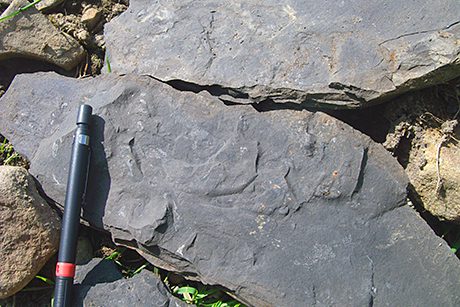A mix of optimism and caution greets new BGS estimates

FIGURES released in late June by the British Geological Survey (BGS) in association with DECC estimate UK shale gas resources as being significantly richer than previously thought – double previous expectations.
But whether or not these resources can be successfully retrieved is another matter, as a number of commentators suggest.
The BGS estimate covers an area between Wrexham and Blackpool in the west, and Nottingham and Scarborough in the east. The estimate is in the form of a range to reflect geological uncertainty. The lower limit of the range is 822 trillion cubic feet (tcf) and the upper limit is 2281 tcf, but the central estimate for the resource is 1329 tcf.
This is double the amount of previous estimates and has prompted the UK government to introduce a number of measures to encourage investment in UK shale gas.
Commented Emma Wild, head of KPMG’s upstream advisory practice: “While the estimated increase in shale gas reserves published by the [BGS] is certainly encouraging news, it is important to remember that this refers to technically recoverable volumes and not to commercially recoverable gas from shale.”
She added: “Additional clarity around regulation is expected in July. This may well help to streamline the process for operations in the UK and will undoubtedly be welcome by all key industry players.”
Meanwhile a US report issued around the same as the BGS announcement struck a far more cautionary note regarding the potential for shale exploration outside the US. The report, from the Kennedy School of Government at Harvard University, highlights the high concentration of drilling rigs and low population densities present in the area of the US where there is shale exploration. Both are unique to the US situation, and the report’s author Leonardo Maugeri suggests, crucial factors that explain why it is the only location where shale gas retrieval has so far been conducted successfully.

What are the BGS estimates?
THE British Geological Survey (BGS) in association with DECC has completed an estimate for the resource (gas-in-place) of shale gas in part of central Britain in an area between Wrexham and Blackpool in the west, and Nottingham and Scarborough in the east. The estimate is in the form of a range to reflect geological uncertainty. The lower limit of the range is 822 tcf and the upper limit is 2281 tcf, but the central estimate for the resource is 1329 tcf.
The BGS says this shale gas estimate is a resource figure (gas-in-place) and so represents the gas that it thinks is present, but not the gas that it might be possible to extract. The proportion of gas that it may be possible to extract is unknown as it depends on the economic, geological and social factors that will prevail at each operation.
The BGS said: “Shale gas clearly has potential in Britain but it will require geological and engineering expertise, investment and protection of the environment.
It will also need organisations like the BGS to play their part in providing up to date and accurate information on resources and the environment to the public, industry and Government.”






